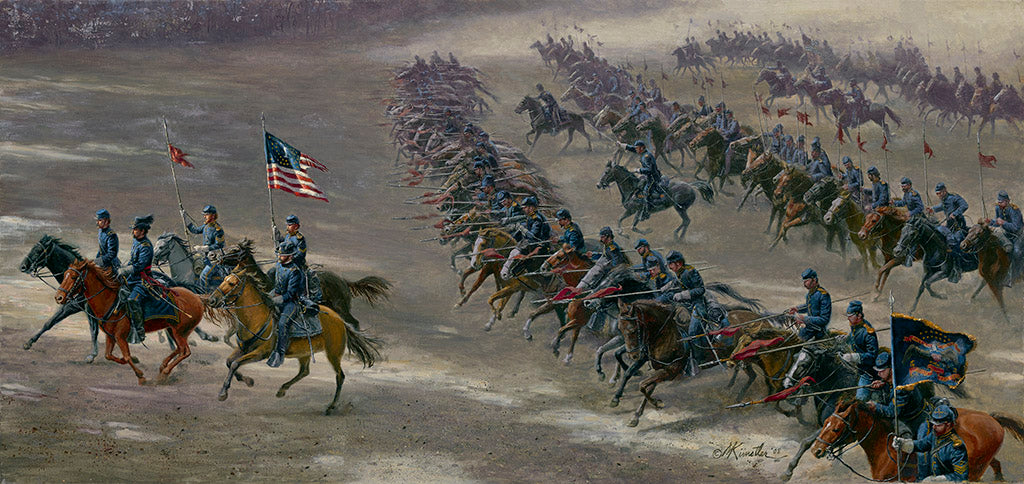The Official Mort Künstler Website
Rush's Lancers – limited edition print - NOT AVAILABLE
Rush's Lancers – limited edition print - NOT AVAILABLE
Camp Meigs, Philadelphia, November 1861
The Premier and Collector’s editions are shipped FREE* and UNSTRETCHED. Stretching is available at an additional charge. Please contact us for pricing: 800-850-1776 or info@mortkunstler.com.
* Free shipping within the Continental United States.
Custom framing is available for this print. Please call 800-850-1776 or email info@mortkunstler.com for more information.
LIMITED EDITION PRINTS
Giclée Canvas Prints
Reproduction technique: Giclées are printed with the finest archival pigmented inks on canvas.
Each print is numbered and signed by the artist and accompanied by a Certificate of Authenticity.
Signature Edition Size: 14” x 29”
Signed & Numbered • Edition Size: 100
Artist’s Proof • Edition Size: 10
Classic Edition Size: 18” x 38”
Signed & Numbered • Edition Size: 50
Artist’s Proof • Edition Size: 10
Premier Edition Size: 23” x 48”
Signed & Numbered • Edition Size: 15
Artist’s Proof • Edition Size: 5
Collector’s Edition Size: 28” x 59”
Signed & Numbered • Edition Size: 5
Artist’s Proof • Edition Size: 2
Historical Information
Patriotic fervor in the first months of the Civil War was never more in evidence than with Rush’s Lancers. Composed mostly of Philadelphia’s raw youth, the recruits knew nothing about riding and caring for horses. Their determined leader was a Pennsylvania aristocrat, Richard Rush, a West Point graduate whose grandfather had signed the Declaration of Independence.
It was Gen. George McClellan who, in late summer of 1861, suggested that Rush’s unit (officially the 6th Pennsylvania Cavalry Regiment) arm itself with lances. Napoleon had made good use of the weapons a half-century earlier when war was less sophisticated. Rush’s young troopers did not take kindly to the nine-foot wooden lance with an eleven-inch steel blade and red banner on the end. One Lancer considered the weapon “a decided nuisance in a wooded country.” Lavish uniforms also made the regiment conspicuous – to friend and foe alike.
Fortunately, the entire regiment never saw action with their vintage lances. When the Pennsylvanians arrived on the Virginia peninsula in the spring of 1862, cavalry commander George Stoneman told Rush to throw away “them Damn poles” and arm themselves with conventional weapons. That was the end of lances in the Civil War.
Mort Künstler’s Comments
One of the many artists who has inspired me is Winslow Homer, the great American illustrator. Harper’s Weekly sent Homer to the front lines of the Civil War, where he sketched battle scenes and camp life, which were then published as illustrations in their publications. He did a painting of Rush’s Lancers and did a lot of research to get it accurate. I admire this painting a great deal. In addition to reading an entire book on Rush’s Lancers by Eric Wittenberg, I also consulted historians on this subject.





